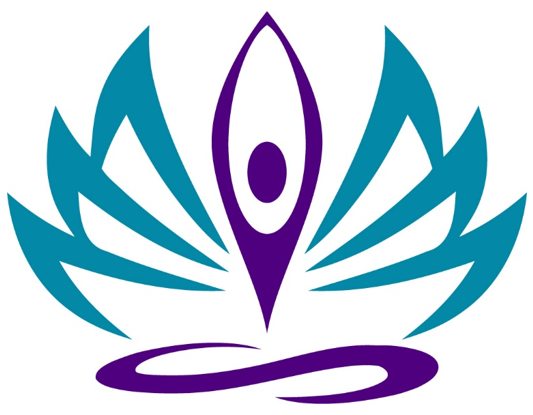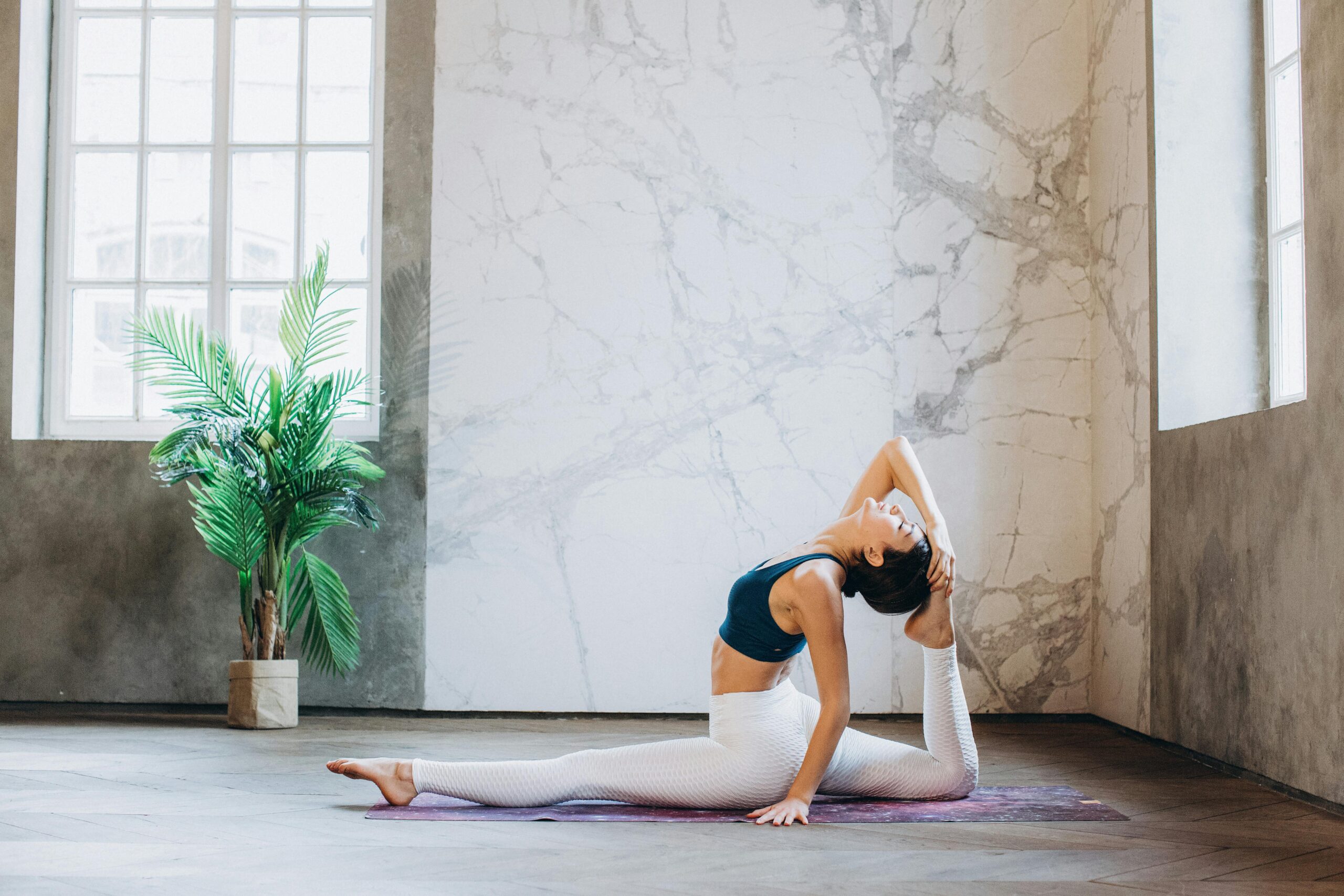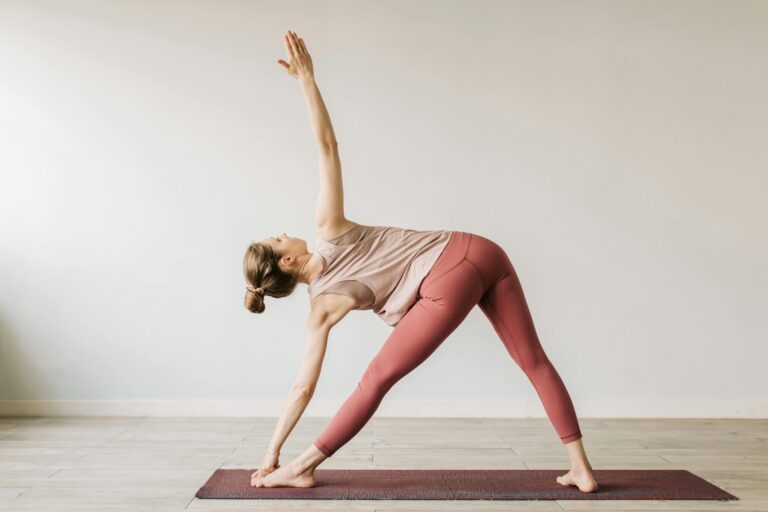Muscle balance for more hip mobility with yoga
The hips are one of the most important joints in the human body. They support our body weight, enable movement and ensure stability. Restricted hip mobility can not only affect our general well-being, but can also lead to pain, tension and injuries. Many people neglect their hip muscles due to prolonged sitting or incorrect movement patterns in everyday life.
Yoga is a wonderful way to improve the flexibility and mobility of the hips. It not only stretches the muscles, but also ensures muscle balance. In this blog article, you will learn how targeted yoga exercises can increase hip mobility. You will also find out why the right muscle balance plays a crucial role in this.
What is muscle balance and why is it important?
Muscle balance refers to the interaction of antagonistic muscle groups (i.e. muscles that perform opposing movements) and their balance in terms of strength and flexibility. If certain muscles are too strong or too weak, this can lead to an imbalance. This can lead to restricted movement.
In the hip area, it is particularly important that the muscles around the hip joint are well coordinated. These include the hip flexor muscles, thigh muscles and gluteal muscles. If one of these muscle groups is hardened or shortened, this can restrict freedom of movement in the hip joint and lead to pain. The hip flexor and the outer side of the pelvis in particular are often affected by tension. Take a look at here my video on stretching the outside of the pelvis.
Yoga exercises for improved hip mobility
Yoga offers many targeted exercises that help to stretch the muscles around the hips. At the same time, the balance between the muscles is promoted. Get started right away and watch this 90-minute yoga session for more hip mobility through muscle balance:
If you don't have 90 minutes right now, here are some of the best yoga poses to promote hip mobility that you can do right away:
1. Seated Pigeon Pose (Eka Pada Rajakapotasana Variation)
This pose stretches the hip flexors and opens the hips. It helps to release tension and increase flexibility in the hip joints.
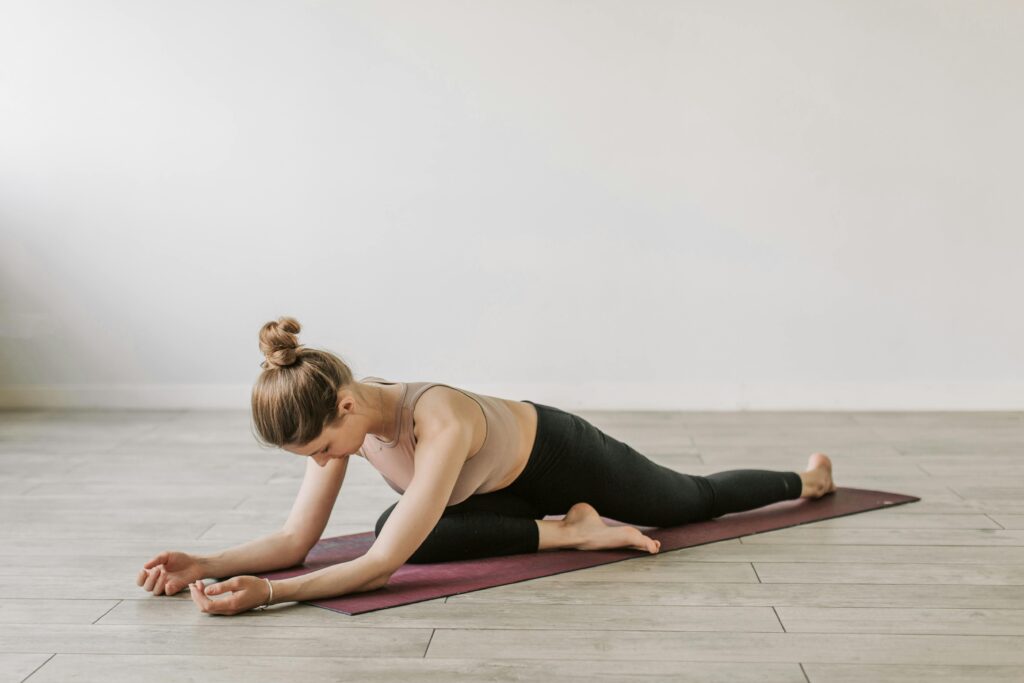

2. Butterfly pose (Baddha Konasana)
Another excellent exercise for stretching the inner thighs in particular. It promotes the opening of the hip joints. If practiced regularly, it can contribute to better mobility.
3. Warrior-2 (Virabhadrasana II)
This asana strengthens the muscles of the hips, thighs and lower back. At the same time, it promotes stability and balance. It therefore helps to keep the hips in a more stable and flexible position by promoting outward rotation of the pelvis.
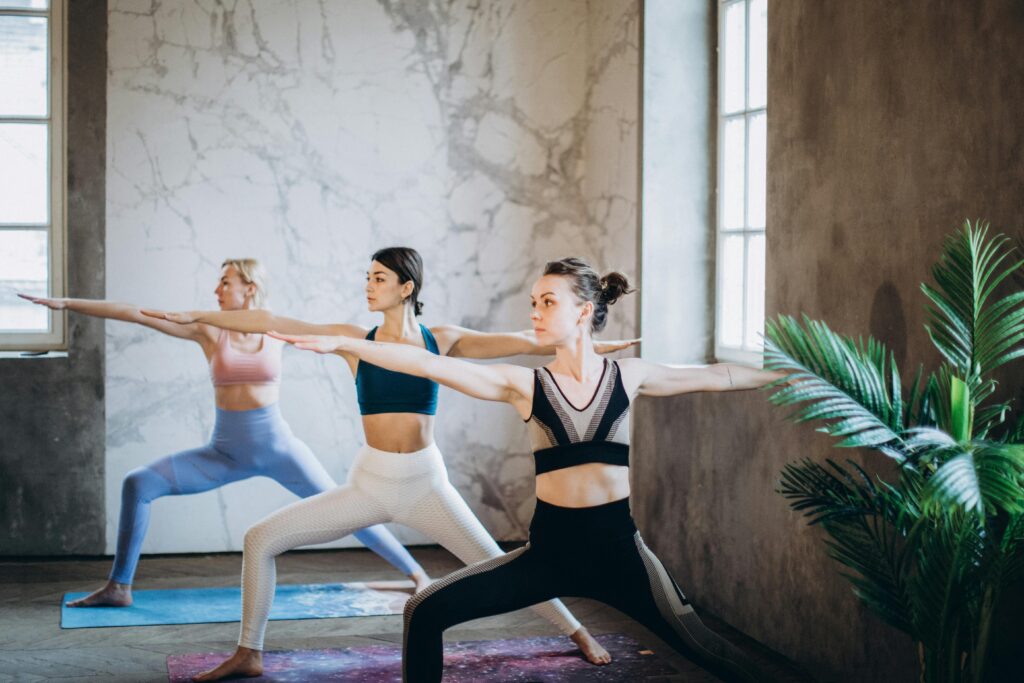

4. Lying twist (Supta Matsyendrasana)
This twist mobilizes the spine and opens the hips. It is ideal for releasing tension in the hip flexor muscles and stretching the muscles on the outside of the pelvis.
Why is muscle balance so important for hip mobility?
Muscle balance in the hips not only promotes better mobility, but also a more stable posture and less pain. If, for example, the hip flexor is too tight in a short position, this can lead to the pelvis tilting forward, resulting in a hollow back, which strains the back and can lead to discomfort. On the other hand, if the gluteal muscles are not sufficiently active, the hip joint cannot be properly stabilized, which can lead to instability and reduced freedom of movement.
These imbalances can be corrected through a targeted yoga practice that combines both stretching and strengthening exercises. Yoga not only helps to increase flexibility, but also strengthens the muscles in the areas that are crucial for hip mobility and stability.
You can find many more exercises and tips for increasing your hip mobility and for targeted training of the muscles around the pelvis in my courses "Unlock Your Pelvis for Women" and "Unlock Your Pelvis for Men„.
Conclusion
Improving hip mobility through yoga is not only important for athletes, but for anyone who sits for long periods of time or is often in a one-sided posture. By specifically training muscle balance and flexibility around the hips, you can not only increase your mobility, but also relieve tension and prevent long-term discomfort.
Start your practice today and integrate these yoga poses into your daily routine to make your hips more flexible and healthy. And don't forget to watch the video for even more practical tips!
